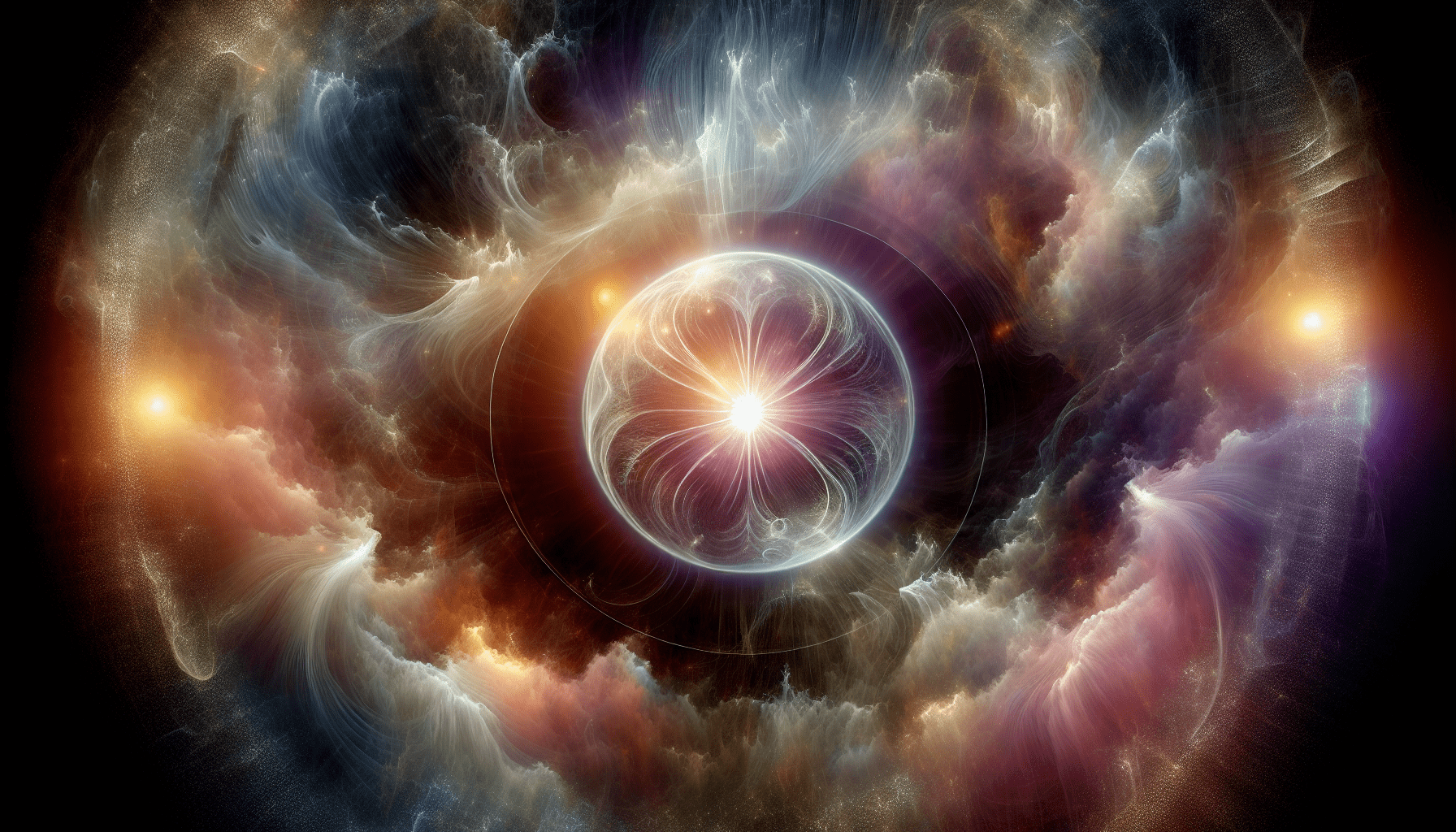Imagine if you could embark on a journey through the cosmos, encountering extraterrestrial beings from distant corners of the universe. From the diminutive Greys to the colossal Reptilians, the galaxy is teeming with a wide array of fascinating lifeforms. In this beginner’s guide, we will delve into the captivating world of aliens, acquainting you with the intricacies of their various species. Get ready to immerse yourself in a cosmic adventure as we explore the different types of aliens and unravel the mysteries they hold.
I. Common Misconceptions about Aliens
A. Hollywood Depictions of Aliens
When it comes to aliens, Hollywood has a way of shaping our perceptions. Movies and TV shows often portray aliens as dangerous creatures with menacing intentions, ready to invade and destroy Earth. These depictions, while entertaining, can create a false sense of fear and paranoia. It’s important to remember that these portrayals are purely fictional and should not be taken as accurate representations of extraterrestrial life.
B. Cultural Beliefs and Urban Legends
Throughout history, various cultures have developed their own beliefs and urban legends surrounding aliens. These tales often involve encounters with extraterrestrial beings or sightings of unidentified flying objects (UFOs). While some of these stories may be based on real experiences, many are simply products of human imagination or misinterpretations of natural phenomena. It’s essential to approach these cultural beliefs and urban legends with skepticism and a critical mindset.
II. Extraterrestrial Life and Its Possibilities
A. The Drake Equation
The Drake Equation is a scientific formula that attempts to estimate the number of technologically advanced civilizations that could exist in our galaxy. Developed by Dr. Frank Drake in 1961, this equation takes into account factors such as the rate of star formation, the fraction of stars with planets, and the probability of life evolving on a habitable planet. While the Drake Equation doesn’t provide a definitive answer, it highlights the vast potential for extraterrestrial life in the universe.
B. Discoveries of Exoplanets
In recent years, scientists have made remarkable discoveries of exoplanets orbiting distant stars. These exoplanets, some of which lie within the habitable zone, have provided further evidence that the conditions necessary for life may exist outside of our solar system. While we have yet to confirm the presence of extraterrestrial life on these planets, these discoveries increase the likelihood of finding life beyond Earth.
C. Microbial Life on Other Planets
One possibility for extraterrestrial life is the existence of microbial organisms on other planets or moons within our solar system. Enceladus, one of Saturn’s moons, has shown promising signs of a subsurface ocean that could potentially harbor microbial life. Similarly, Mars, with its history of water and the discovery of organic molecules, remains a prime candidate for the presence of microbial life. Studying these potential habitats and collecting samples will provide crucial insights into the existence of extraterrestrial life.
III. Close Encounters of the First Kind
A. Definition and Characteristics
Close encounters of the first kind refer to sightings of unidentified flying objects (UFOs) at a distance. These sightings often involve unexplained lights or objects in the sky that cannot be attributed to any known human-made or natural phenomenon. While these encounters are intriguing, they do not involve any direct interaction or communication with the UFO.
B. Famous Examples
There have been numerous famous examples of close encounters of the first kind throughout history. One notable case occurred in 1947 when pilot Kenneth Arnold reported seeing nine unusual objects flying at high speeds near Mount Rainier, Washington. This incident, often credited as the origin of the term “flying saucer,” sparked widespread interest in UFO sightings. Another well-known example is the Phoenix Lights incident in 1997, where thousands of people witnessed a series of unidentified lights flying over the city of Phoenix, Arizona.
IV. Close Encounters of the Second Kind
A. Definition and Characteristics
Close encounters of the second kind involve the physical effect or evidence associated with the presence of a UFO. These encounters can include phenomena such as electromagnetic interference, physiological effects on living organisms, or the trace evidence left behind by the UFO. While these encounters provide stronger evidence than sightings alone, they still do not involve direct contact or communication with the occupants of the UFO.
B. Physical Evidence
Over the years, various cases of close encounters of the second kind have presented compelling physical evidence. One famous example is the 1964 Socorro UFO incident, where police officer Lonnie Zamora witnessed a shiny metallic object on the ground that subsequently took off into the sky. The physical traces left behind at the landing site, including burnt vegetation and imprints, fascinated experts and raised questions about the nature of the object.
V. Close Encounters of the Third Kind
A. Definition and Characteristics
Close encounters of the third kind involve direct communication or contact between humans and extraterrestrial beings. These encounters go beyond mere sightings or physical evidence and involve interaction with the occupants of the UFO. These interactions can range from visual communication or gestures to verbal or telepathic communication.
B. Communication and Contact
While close encounters of the third kind are rare and highly debated, there have been several intriguing accounts. One well-known case is the alleged Roswell incident in 1947, where it was speculated that a UFO crashed near Roswell, New Mexico, and the U.S. military recovered debris and even extraterrestrial bodies. Other reported cases include individuals claiming to have been abducted by aliens and subjected to various experiments or examinations. These accounts, although controversial, have fueled the ongoing debate surrounding close encounters of the third kind.
VI. Greys: The Most Commonly Reported Alien Type
A. Physical Description
Greys, often described as the most commonly reported type of aliens, are characterized by their distinct physical features. These beings are typically depicted with a hairless head, large black eyes, a slight frame, and grayish skin. The image of the Grey alien has become deeply ingrained in popular culture and has influenced numerous portrayals in movies, books, and documentaries.
B. Alleged Abductions by Greys
Many abduction claims involving Greys describe a scenario where individuals are taken against their will and subjected to various examinations, manipulations, or implants. While these accounts are highly controversial and lack conclusive evidence, they have garnered significant attention and continue to spark both fascination and skepticism.
VII. Reptilians: Myth or Reality?
A. Origins and Popularity
Reptilians, also known as reptoids or lizard people, are a type of alleged humanoid reptilian creature. The concept of Reptilians gained popularity through conspiracy theories and claims of secret societies secretly controlling world governments and institutions. Some believe that Reptilians originated from other star systems and have infiltrated Earth.
B. Characteristics and Intriguing Theories
According to supporters of the Reptilian theory, these beings possess reptile-like features such as scaly skin, slanted eyes, and even tails. Some theories suggest that Reptilians have shape-shifting abilities, allowing them to disguise themselves as humans and manipulate influential figures in society. While there is no scientific evidence to support these claims, they remain a subject of fascination for many.
VIII. Nordic or Pleiadians: Benevolent Beings
A. Traits and Physical Appearance
Nordic or Pleiadian aliens are often portrayed as benevolent beings who offer guidance and enlightenment to humanity. According to accounts, these beings possess tall, blonde hair, blue eyes, and a radiant appearance. They are said to come from the Pleiades star cluster and have a strong connection to spirituality and cosmic wisdom.
B. Messages and Teachings
Supporters of the Pleiadian belief argue that these beings communicate messages of love, unity, and the importance of preserving the planet. They are believed to have advanced spiritual knowledge and encourage humanity to raise their consciousness and embrace a more harmonious way of living. While these claims are highly speculative, they continue to captivate those exploring the realms of extraterrestrial possibilities.
IX. Anunnaki: The Ancient Astronauts
A. Ancient Mesopotamian Mythology
The Anunnaki, prominent figures in ancient Mesopotamian mythology, are believed by some to be ancient astronauts who visited Earth in the distant past. These beings were depicted as god-like figures who played a significant role in the creation and development of human civilization. According to this belief, the Anunnaki came from the planet Nibiru, which orbits our sun every 3,600 years.
B. Influence on Human Civilization
Proponents of the Anunnaki theory argue that these beings genetically manipulated early humans to create a slave race for mining and other purposes. They believe that ancient texts and artifacts contain evidence of the Anunnaki’s involvement in human history. While these claims are speculative and heavily debated among scholars, they contribute to the broader exploration of the potential influence of extraterrestrial beings on our past.
X. Other Alien Types: Encounters and Allegations
A. Insectoids
Insectoid aliens, as the name suggests, are beings often depicted as insect-like in appearance. They are said to possess insect-like features such as compound eyes, exoskeletons, and sometimes wings. Alleged encounters with Insectoids describe a wide range of interactions, from friendly communications to more unsettling experiences.
B. Humanoids
Humanoid aliens, as the name implies, closely resemble humans in physical appearance. They are often portrayed with two arms, two legs, and a head. Claims of encounters with humanoid aliens include stories of individuals being approached by these beings, sometimes engaging in conversation or sharing messages.
C. Hybrid Aliens
Hybrid aliens are believed to be a combination of extraterrestrial and human DNA, resulting in beings with both human and alien characteristics. These alleged hybrids are said to possess heightened psychic abilities and serve as intermediaries between humans and extraterrestrials. While these claims remain highly speculative, they contribute to the broader discussion of potential crossbreeding between species.
In conclusion, the world of aliens and extraterrestrial life is filled with mysteries, misconceptions, and endless possibilities. Hollywood depictions and cultural beliefs may shape our initial perceptions, but it is essential to approach these topics with an open mind and critical thinking. Scientific advancements, discoveries of exoplanets, and ongoing research into microbial life offer promising avenues for understanding our place in the universe. As we delve deeper into the realms of close encounters and different types of aliens, let us continue to explore, question, and expand our knowledge of the cosmos and our potential cosmic neighbors.

